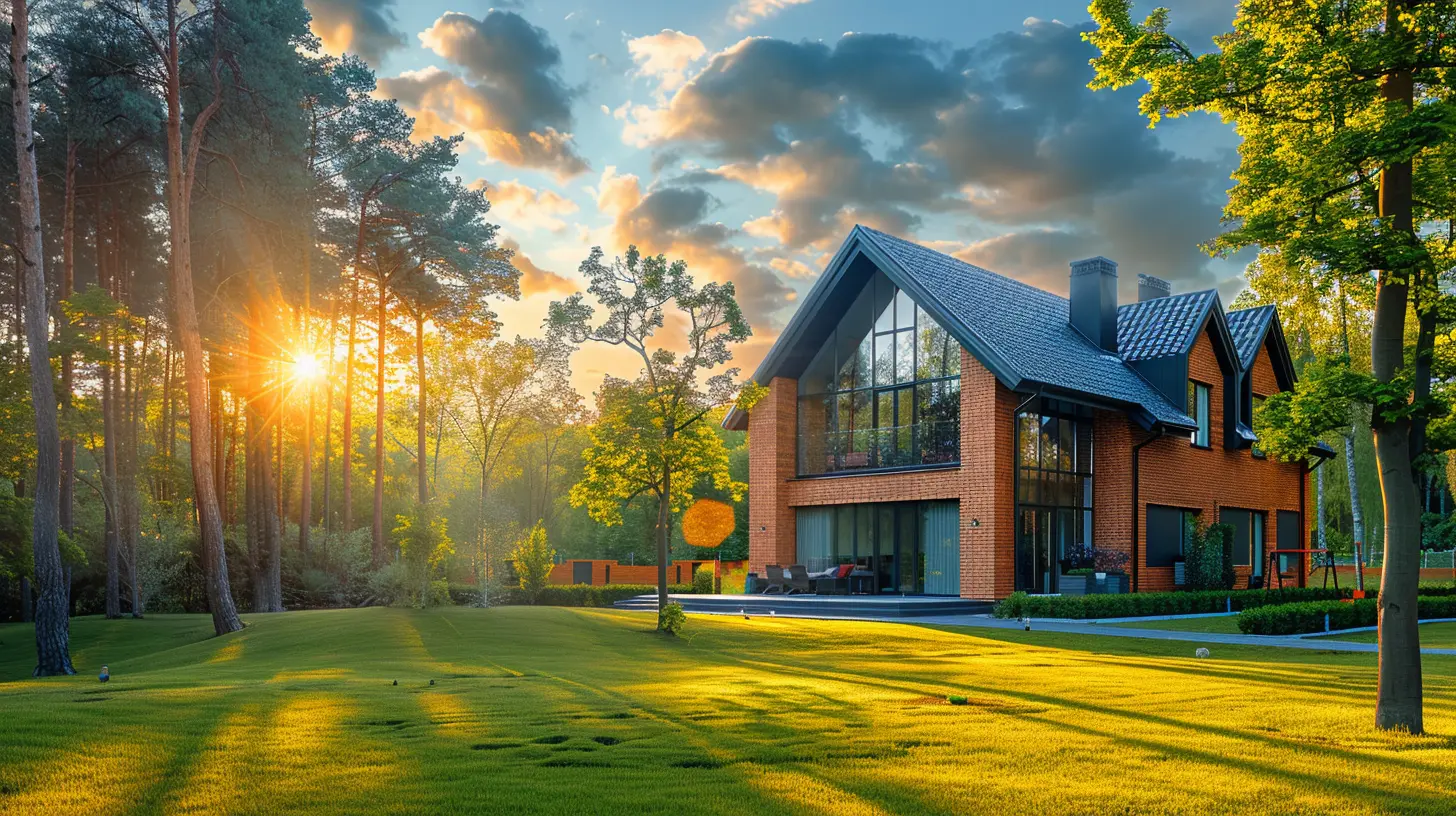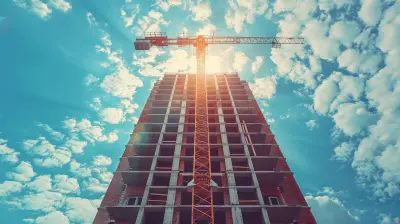Reducing Waste in Home Construction and Renovation Projects
4 December 2024
Alright, let’s talk about something that no one wants to admit is a problem but we all know is: waste in home construction and renovation projects. You know what I’m talking about — those towering piles of leftover drywall, ancient cabinets you ripped out in a fit of HGTV-fueled rage, and enough packaging material to build your own mini landfill in the backyard. Yeah, that stuff.
Renovating or building a home is supposed to be exciting, but it can also turn into a hot mess when it comes to waste. Luckily, with a little planning, some creativity, and a healthy dose of common sense, you can reduce the dumpster fire (literally and metaphorically) that comes with your dream project. Let’s break it down, step by step.
Why Waste in Construction Is the Elephant in the Room
Here’s the thing about construction waste: it’s everywhere. Did you know the construction industry is responsible for about one-third of all waste globally? That’s not just inconvenient; it’s downright shocking. Imagine if every contractor and DIY aficionado decided to build their own Mount Everest out of debris — we’d run out of Earth real quick.But it’s not just about aesthetics or running out of landfill space (though, yeah, that’s a problem, too). Construction waste has all kinds of nasty ripple effects. The production and disposal of materials require boatloads of energy, so when we’re wasteful, we’re basically giving climate change a high five. Add in the financial cost of hauling all that junk away, and the waste starts to hit where it really hurts: your wallet. 
Demolition vs. Deconstruction: Stop Smashing, Start Salvaging
Let’s address the big, dramatic elephant in your renovation project: demolition. I get it — taking a sledgehammer to your outdated kitchen backsplash feels like therapy. But before you channel your inner Hulk, consider this: deconstruction is cooler, smarter, and easier on the planet.What’s the Difference?
- Demolition: Smash, crush, and destroy. Everything goes into a giant dumpster, never to see the light of day again.- Deconstruction: Carefully disassemble what you can, salvage what’s useful, and donate or reuse materials instead of tossing them.
Think of deconstruction as the Marie Kondo version of demolition. You’re only getting rid of what absolutely doesn’t spark joy while giving the rest a second life. Bonus: some materials, like vintage wood or old fixtures, might even make you a little cash at salvage yards. 
Plan Ahead or Prepare for Chaos
This one’s simple: if you fail to plan, you’re planning to fail… and fill a landfill in the process. Before a single nail gets hammered, figure out exactly what you’re dealing with.Tips for a Waste-Free Game Plan:
1. Get a Material List: Know what’s needed before you start. Over-ordering materials because you “might need extras” is so last decade.2. Choose Durable Materials: Opt for items that won’t need replacing every few years. Your wallet and the planet will thank you later.
3. Measure Twice, Cut Once: Ever cut a piece of wood too short and had to toss it? That’s a rookie move, my friend.
4. Hire the Right Contractors: Not all contractors care about waste. Find one who does or, better yet, bully your current one into caring.

Reuse and Repurpose: The Thrift Store Mentality
Whenever possible, reuse what you already have instead of buying new materials. I’m not saying you need to turn your grandma’s old dining table into a kitchen island (though, honestly, that sounds kinda cool), but you’d be surprised how much you can salvage.Ideas for Getting Creative:
- Cabinets: A fresh coat of paint and some snazzy new hardware can make old cabinets look brand new.- Wood: Leftover wood can be used for shelving, trim work, or even DIY furniture projects.
- Tiles: Have extra tiles? Make a funky mosaic or save them to repair chips down the road.
And if repurposing isn’t your thing, don’t just toss what’s salvageable. Donate it to a local Habitat for Humanity ReStore or post it online — someone out there will gladly take your unwanted materials off your hands. Trust me, one person’s junk is another’s Pinterest masterpiece.
Buy Secondhand Like a Pro
Speaking of thrift store vibes: not everything in your project needs to be brand spanking new. Secondhand building materials are a goldmine for unique finds and major savings.Check out local salvage yards, Craigslist, or Facebook Marketplace. You’ll find everything from reclaimed wood and vintage light fixtures to slightly used appliances. Pro tip: don’t forget to haggle. You’re doing the environment a favor—you kinda deserve a discount.
Recycling: Not as Boring as It Sounds
Let’s be honest: recycling is that thing we all know we’re supposed to do but don’t always prioritize. But when it comes to construction waste, it’s way cooler than separating your paper and plastic at home.What Can You Recycle?
- Metal: Copper pipes, aluminum siding, and steel are all recyclable gold. (Well… not literally gold, but you get my point.)- Concrete and Masonry: These can often be crushed down and reused in new projects.
- Plastic: Those buckets and packaging materials you thought were trash? Yep, they’re probably recyclable.
Check your local recycling centers for what they’ll accept. Some places even offer free pickup for larger construction materials. Less work for you, more karma points for Mother Nature.
The Lean, Mean, Minimalist Machine
There’s a growing movement in construction called lean construction, and no, it’s not about lifting weights or drinking green smoothies on the job site. It’s about being hyper-efficient and cutting down on unnecessary waste — from materials to labor.Think of it like trimming the fat in your favorite recipe. You’re only using exactly what you need and no more. That means:
- Ordering precise amounts of material
- Building in stages to avoid over-purchasing
- Reducing excessive packaging
Not only will this save you money, but it’ll also make your entire project run smoother. Fewer materials lying around means fewer opportunities for accidents, and who wants to deal with that kind of drama?
Composting Construction Waste: Wait, What?
Okay, hear me out: not all construction waste is destined for the dump or even the recycling center. Some of it can actually be composted. Things like sawdust, untreated wood scraps, and even certain types of insulation can break down naturally and be repurposed into soil.Now, I’m not saying you should start a compost pile in the middle of your renovation project (unless you’re into that kind of chaos), but it’s worth looking into if you’re dealing with natural materials.
The Power of Prefab
If you really want to cut down on waste, consider using prefabricated building components. These are pre-made in a factory and brought to your site ready to go. Why does this matter?1. Precision: Factory production means fewer material offcuts.
2. Speed: Faster assembly means less time for waste to pile up on-site.
3. Consistency: You’re not dealing with the unpredictability of cutting everything on-site.
It’s like ordering your house IKEA-style, except you won’t have to decipher a 37-step pictogram to figure out how it all fits together.
Skip the Dumpster Drama
Finally, let’s talk about the big orange or green monster sitting in front of your house: the dumpster. If you’re going to rent one, fill it wisely. Sort your waste as much as possible, separating recyclables and reusable items from actual trash.Better yet, skip the dumpster altogether and see if you can work with companies that specialize in waste management for construction projects. They’ll sort and recycle everything for you, which means less stress and a smaller carbon footprint.
Final Thoughts
Reducing waste in home construction and renovation projects isn’t just about doing the planet a solid—it’s about making your life easier and your project more cost-effective. So, next time you’re considering chucking that perfectly good piece of wood or ordering 300 tiles for a bathroom that only needs 150, think again. Your future self (and the environment) will thank you.all images in this post were generated using AI tools
Category:
Green HomesAuthor:

Mateo Hines
Discussion
rate this article
16 comments
Zephyros Sheppard
Embracing sustainable practices in home construction not only reduces waste but also creates healthier living spaces. Together, we can build a greener future for generations to come!
February 12, 2025 at 1:50 PM

Mateo Hines
Absolutely! Sustainable practices are key to minimizing waste and enhancing our living environments. Let's work together for a greener future!
Vera Sharpe
Great insights on sustainable practices! Emphasizing waste reduction in construction not only benefits the environment but saves costs too.
January 29, 2025 at 4:16 AM

Mateo Hines
Thank you! I’m glad you found the insights valuable. Waste reduction is indeed a win-win for both the environment and budgets!
Julia McDonald
This article effectively highlights the importance of minimizing waste in home construction. Sustainable practices not only benefit the environment but also save costs in the long run. Essential reading for eco-conscious builders!
January 22, 2025 at 12:15 PM

Mateo Hines
Thank you for your insightful comment! I'm glad you found the article valuable and appreciate your support for sustainable building practices.
Azriel Ford
Build smart, waste less, inspire sustainable living!
January 16, 2025 at 1:41 PM

Mateo Hines
Thank you! Embracing smart building practices is essential for a sustainable future. Let's inspire change together!
Peregrine Velez
Great insights on minimizing waste in construction! Implementing sustainable practices not only benefits the environment but also reduces costs. Every small change can lead to significant improvements in overall efficiency.
January 11, 2025 at 8:07 PM

Mateo Hines
Thank you! I'm glad you found the insights valuable. Every step towards sustainability truly makes a difference in both the environment and project efficiency.
Celeste McDougal
Embrace sustainable building practices! Prioritizing waste reduction isn't just eco-friendly; it's a smart investment for future-ready homes. Let's build responsibly!
January 7, 2025 at 12:42 PM

Mateo Hines
Thank you for your insightful comment! Embracing sustainable practices is indeed essential for both the environment and long-term value in home construction. Let's continue to advocate for responsible building!
Damien McGowan
Great insights! Let's build better!
January 3, 2025 at 1:10 PM

Mateo Hines
Thank you! Together, we can make a positive impact!
Cassian Kirkland
Great insights on sustainable practices in home construction! Reducing waste not only benefits the environment but also enhances the value of our homes. Embracing eco-friendly approaches can inspire both builders and homeowners to make smarter choices. Let's continue to prioritize sustainability in our projects for a greener future!
December 31, 2024 at 9:50 PM

Mateo Hines
Thank you! I completely agree—prioritizing sustainability not only benefits the environment but also adds value to our homes. Let's keep pushing for eco-friendly practices in construction!
Kayla Benson
Why waste wood when I can just use all my old pizza boxes for renovations?
December 27, 2024 at 9:41 PM

Mateo Hines
Using old pizza boxes may not provide the structural integrity needed for renovations. Consider recycling them and using sustainable materials for better long-term results.
Charlie Valentine
Embracing sustainable practices in home construction not only minimizes waste but also enhances property value—smart moves for modern homeowners!
December 24, 2024 at 3:42 AM

Mateo Hines
Thank you for your insightful comment! You're absolutely right—sustainable practices not only reduce waste but also significantly boost property value, making them a wise choice for today's homeowners.
Thor Torres
Embracing sustainable practices in home construction not only reduces waste but also fosters creativity and innovation. Together, we can build a greener future while creating beautiful, functional spaces for generations to enjoy!
December 20, 2024 at 1:40 PM

Mateo Hines
Thank you for your insightful comment! Embracing sustainability truly enhances both creativity and environmental responsibility in home construction. Together, we can create beautiful spaces while protecting our planet.
Zariah Ross
Building sustainably today creates a brighter tomorrow for all!
December 15, 2024 at 10:00 PM

Mateo Hines
Absolutely! Sustainable building practices not only minimize waste but also ensure a healthier environment for future generations.
Aisha James
In the shadows of construction sites, a quiet revolution brews. What if the key to a sustainable future lies hidden in the remnants of yesterday's projects? Discover how reducing waste can not only transform homes but also unearth secrets of innovation.
December 13, 2024 at 12:22 PM

Mateo Hines
Thank you for your insights! Embracing the remnants of past projects is crucial for innovation and sustainability in home construction. Let's continue to explore these hidden opportunities!
Nadine Reynolds
Implementing sustainable materials and efficient planning in construction reduces waste significantly, benefiting the environment and enhancing project cost-effectiveness in renovations.
December 11, 2024 at 8:09 PM

Mateo Hines
Thank you for your insightful comment! Sustainable materials and efficient planning are indeed crucial for minimizing waste and improving cost-effectiveness in construction and renovation projects.
Eliza Diaz
Reducing waste in home construction is like trying to diet during the holidays—everyone’s excited to start, but somehow, leftover materials always end up at the party! Let’s build smart, not hoard!
December 8, 2024 at 5:38 AM

Mateo Hines
Great analogy! Just like a holiday diet, mindful planning and smart choices can help us minimize waste in construction. Let's keep the focus on sustainable building practices to build better and greener!
Anabella Wilcox
This article highlights a crucial aspect of sustainable building practices. Reducing waste in construction not only benefits the environment but also saves costs and enhances efficiency. Implementing these strategies should be a priority for homeowners and builders seeking to create eco-friendly and cost-effective living spaces.
December 4, 2024 at 3:50 AM

Mateo Hines
Thank you for your insightful comment! I completely agree—reducing waste is essential for both environmental sustainability and cost efficiency in construction. It's a win-win for homeowners and builders alike.
MORE POSTS

The Future of Mortgage Lending: What Buyers Can Expect

Chimneys, Fireplaces, and Home Inspections: What to Expect

Pet-Friendly Condos: Finding the Right Place for You and Your Pets

The Environmental Impact of Modern New Constructions

Virtual Staging for Historical Properties: Merging the Old With the New

How to Stay Connected with Nature While Living in a Condo

Expert Tips on Writing a Hardship Letter for a Short Sale

Condo Living for Families: Tips for Spacious and Comfortable Living

How Population Growth Affects the Real Estate Supply Cycle

Building Higher with New Construction: A Look at Multi-Story Developments